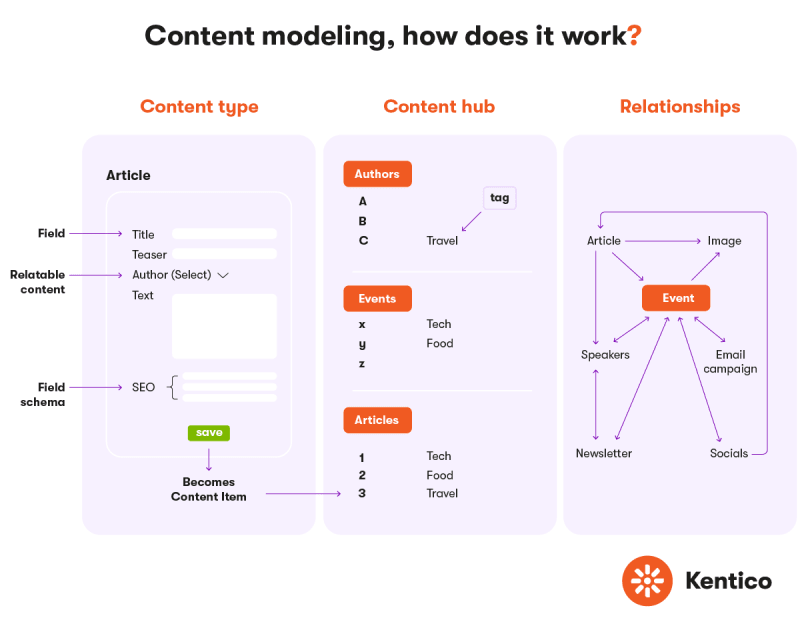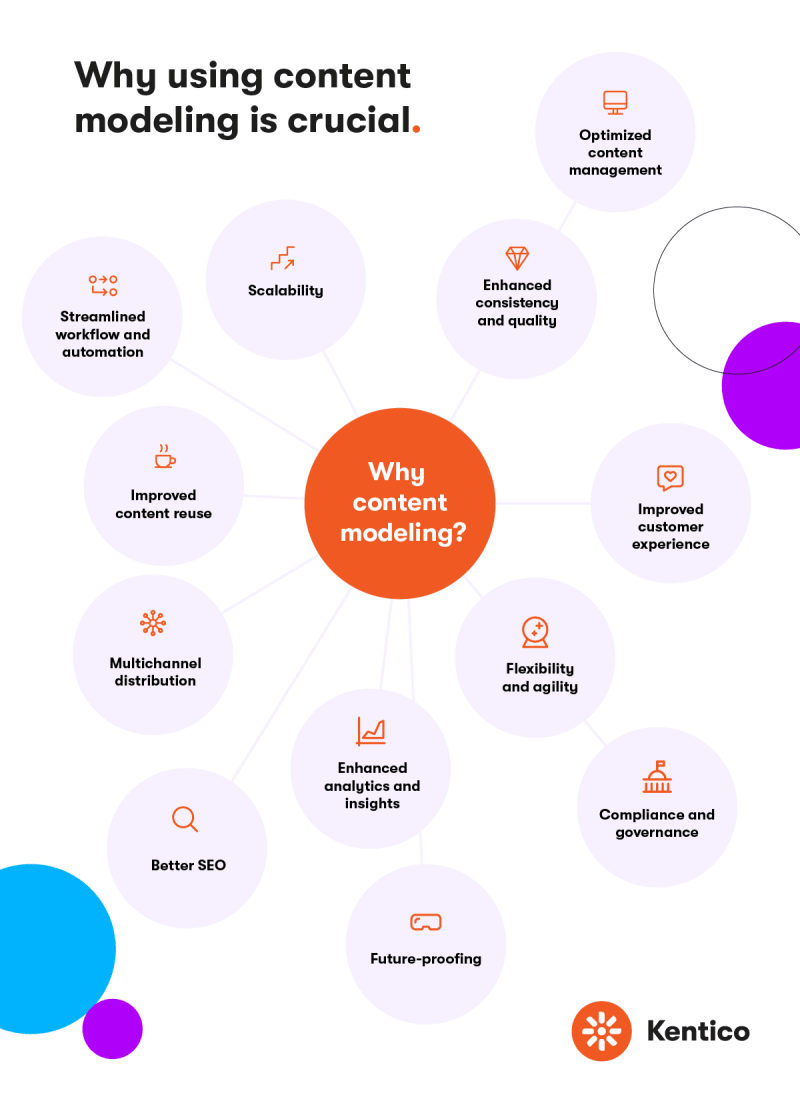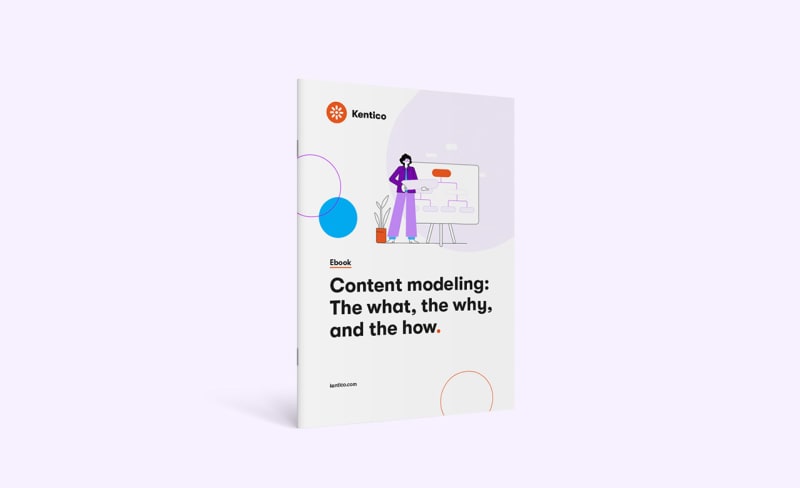As artificial intelligence (AI) and machine learning (ML) capabilities evolve at a breakneck pace, a pressing question looms: Will these technologies enhance or replace traditional content models? And what ripple effects will this have on content strategy, user experience, and personalization
In this article, we delve into the insights of five leading experts who stand at the cutting edge of content modeling, AI, and ML. They offer a glimpse into how these advanced technologies are reshaping content modeling, highlighting the opportunities they unlock and the challenges they bring to the table.
Join me and our panel of experts as we explore, “What impact does/will AI and ML have on content modeling?”
Enhanced automation and efficiency
“Content modeling and taxonomy are going to move forward at a drastically faster pace than before because of the rise of AI and machine learning. Historically, the actual modeling and strategy of creating rich taxonomy and flexible types that match your organization's data was done by hand. It was an intricate and complex task. AI/ML now has hundreds, if not thousands, of examples it can pull from to complete the task for you in seconds.”
Brian McKeiver, Co-Owner, BizStream

AI significantly enhances efficiency and automation in content modeling and taxonomy by automating time-consuming tasks and enhancing data processing capabilities. It automatically identifies and categorizes content—whether text, images, or other media—speeding up the tagging process and ensuring consistency and accuracy across large volumes. This reduces manual effort, shortens the content lifecycle, minimizes errors, and also leads to better content discoverability.
Additionally, AI analyzes vast datasets in real-time to dynamically create and adjust taxonomies in real time, keeping content relevant and well-organized. It can also suggest optimal content structures based on data insights, further enhancing the organization of content. By managing large volumes efficiently, AI enables organizations to scale content operations effectively without increasing manual labor.
Improved content reuse and recommendation

“There is a clear opportunity in AI-powered tagging. Once AI has automatically recognized and classified your content—selecting or proposing tags—these tags then assist AI engines in navigating your content repository and recommending relevant content. What’s more, content modeling can enable AI models to reuse existing, pre-prepared content attributes (building blocks) for the automated creation of new pages, product pages, articles, or social media posts.”
AI enables organizations to unlock new value from their existing content through content reuse and repurposing. It does this by breaking down content into reusable components or attributes, which act as building blocks for creating new material. This allows for dynamic assembly and customization of content tailored to specific channels or audiences. Not only does this support omnichannel strategies, but it helps brands maintain a unified voice regardless of where the content is delivered.
These intelligent tagging systems also help AI better understand relationships between content pieces, leading to more accurate recommendations and personalized user experiences.
“I see AI-driven predictive content creation changing the way we approach content development. AI can predict emerging trends and user needs by analyzing data trends and user interactions, allowing us to tailor our content proactively. This capability requires our content models to be agile and integrated with AI to produce relevant and timely material effectively. Implementing these predictive tools streamlines content creation and improves user engagement by ensuring that content is directly aligned with user preferences and market demands."
Serhiy Sydorchuk, CTO at Bits Orchestra
AI-driven predictive content creation is transforming content development from reactive to proactive strategies. By analyzing data trends and user interactions, AI anticipates emerging trends and user needs, allowing creators to plan content in advance. For this to work effectively, content models must be agile and well-integrated with AI tools.
This data-driven approach keeps content relevant, aligns it with user preferences, and helps organizations stay ahead of market demands, ultimately boosting user engagement.
Extended content reach

“AI is increasing the pressure for content to stand on its own. Users were already viewing content in search tools like Google search snippets and knowledge panels—often answering their questions without clicking into websites. However, the buzz and popularity of AI-generated overviews like with Chat GPT and Bing search enhancements, is amping up this trend. This means marketers need the ability to reach users with their content outside of the traditional website more than ever. Creating a semantic content model, one that focuses on the meaning of the content instead of how it will be displayed in a website, enables content to be more easily consumed by the bots that fuel search engines and AI models. This will increase the rate that their content is featured in search results and AI-generated summaries, helping the content to reach users where they are at.”
A semantic content model organizes content based on its meaning and relationships, focusing on the concepts and connections between pieces rather than just their format or display. This makes content more versatile, reusable, and adaptable across various platforms.
AI enhances this model by using natural language processing and machine learning to understand and classify content effectively. It automatically tags and links content based on semantic relationships, improving discoverability and making it easier for search engines and AI platforms to surface relevant information. This extends the reach of content, helping it to appear more frequently in search results and AI-driven summaries, ultimately connecting users with the content they need more efficiently.

Requires the human touch
“AI is a very powerful tool and accelerator for many purposes, and it could achieve so much if humans did not hold it back. We do not hold it back deliberately, but sometimes we are not able to give it enough specific instructions in a reasonable time frame to produce the expected result instead of a plausible answer. I see the content model as a very specific and focused expression of the creators' intentions that deserves a lot of personal attention. So I am rather skeptical about using AI for idea content modelling, although I am convinced that if you define the model and taxonomy well and give it to your copilot as an entry, then AI will be able to make it the backbone of your CMS in no time and also follow it to deliver quality content.”
Martin Jonas, Solution Architect at Actum Digital
While AI holds transformative potential for content modeling and management, its success heavily depends on the quality of the initial human input. Content models often require a nuanced understanding and specific intentions that AI alone may struggle to develop. Humans bring essential creativity, context, and strategic insight to the design of content models, ensuring that they align with organizational goals and values.
Once a content model and taxonomy are well-defined by humans, AI can excel in implementing and automating these frameworks. AI can efficiently manage large volumes of content, apply consistent tagging, and maintain quality across various platforms. This combination allows organizations to harness the strengths of both human expertise and AI efficiency, ensuring that content remains aligned with intended messaging while benefiting from the scalability and automation that AI provides.
AI and content modeling: The future
AI is transforming content modeling by making processes faster, smarter, and more scalable. By taking over tasks like categorizing and tagging content, AI slashes manual work, speeds up content cycles, and boosts accuracy across large datasets. It doesn’t just keep things organized—it also adapts in real time, making your content easier to manage and more relevant to your audience. Plus, AI’s predictive skills allow businesses to get ahead of trends and personalize content, which can lead to higher engagement and a stronger connection with users.
But it's not without challenges. The effectiveness of AI depends on the quality of the initial content models and data, and it’s crucial to be mindful of biases and maintain control over the finer details that AI might miss. While AI can handle a lot, human input is still key in setting up clear frameworks and aligning content with brand goals.
As AI technology keeps evolving, the best results will come from blending AI’s power with human insight, keeping content strategies agile and ready for whatever comes next in the digital world.

“This is not the future, the technology exists now.”
Learn more about content modeling and how it can change your game with our free ebook, Content modeling: The what, the why, and the how.
Subscribe to the Kentico Xperience newsletter
You'll receive our newsletter once a month with all the updates you need to know to keep you in the loop with the Kentico Xperience community. Just the hits—guaranteed.


